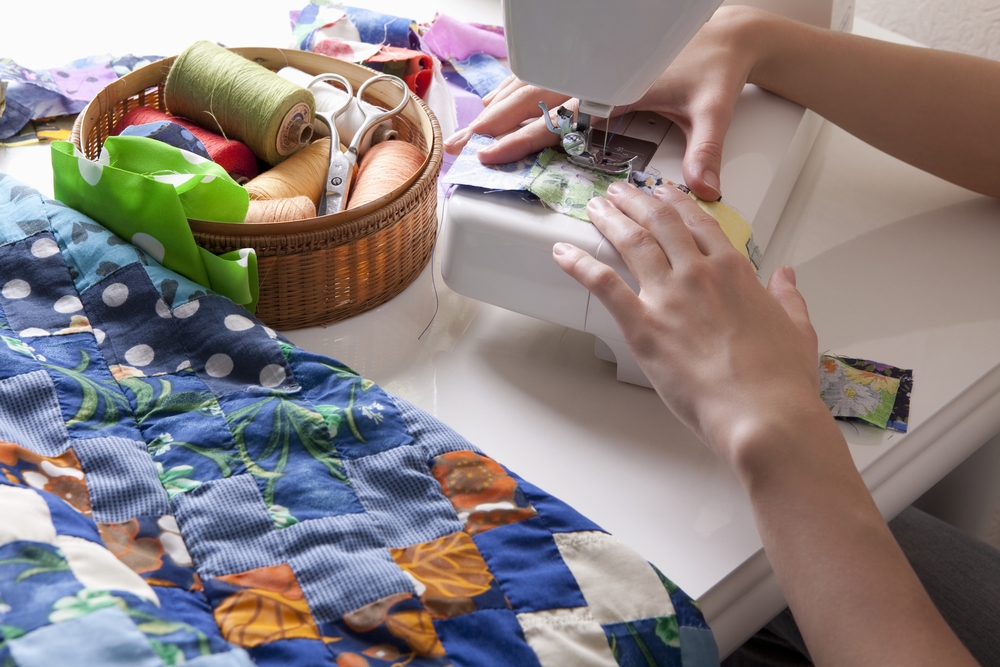Quilting cotton forms the best attire for the majority. They usually appear crispier than apparel cotton. They fit well when knitted to casual wear. The textile is somehow rough with hard drapes.
Based on the production companies and manufacturing styles, quilting cotton appears with different weight. They work well when converted into loose-fitting attires. They are easy to clean but require frequent ironing. However, they iron easily and appear beautiful.
By the way, we just updated the Singer 4452 article here.
Working with Quilting Cotton
Most experienced cloth makers can attest to their milestones of stitching with quilting cotton. Compared to the most fashionable materials, they are cost-effective. This material type is, therefore, appropriate for starters when conducting trial and errors.
Quilting cotton is easy to use and adapt to. You can cut and sew the pieces easily since they are neither slippery nor sticky. Importantly, while conducting random stitching, this material enables you to play around with various designs and create the most attractive print pattern.
Essential Aspects to Consider When Working With Quilting Cotton
1. Marking and Cutting
Mark pen chalk or transfer paper works well on quilting. Try to mark on the opposite side of the textile to avoid interfering with the printed side.
You should utilize a cutting mat, and a rotary cutter made for cutting quilting cotton. The method enables you to cut without straining, and it creates clean-cut lines.
2. Material Care
Your quilting fabric may shrink to certain levels. It all depends on the quality. You should wash the material before cutting for all the shrinkage to clear before sewing the garment.
When washing, use a gentle detergent without dyes. Ensure you rinse thoroughly for the complete removal of any remains of the detergent. Iron dry either on permanent press or on cotton setting.
Whenever you are pressing the quilting cotton, a hot-steam press will work flawlessly without damaging the material. For great results, always press with the printed side facing down.
3. Sewing Considerations
A polyester thread is appropriate for threading a quilting cotton fabric. It is firmer than the cotton thread and has more color varieties. When deciding on the needle size, relate it to the fabric quality as well as the weight and type of thread that you intend to use.
However, quilting cotton falls under the mid-range kinds of fabric. Therefore, it is suitable to use the universal needle, 80/12.
4. Finishings
Although quilting does not loosen easily, always try to complete the raw edges. Using pinking shears or cloth to close the raw edges produces excellent results. Since most fabrics made using quilting cotton targets casual wears, fine seaming for the finishes is not compulsory.
Also, a 1-2 inches double-folded hem is perfect for such-like material. When you stitch a smaller hem, it tends to turn up and fails to flatten. Whenever you wish to raise the garment slightly, utilize a blind hem stitch rather than the straight stitch.
Additional Tips for Stitching with Quilting Cotton
- Ensure you are keen to the fabric needed for a specific pattern. Despite some materials having widths of 55 to 60 inches, quilting usually has 44 to 45 inches. This factor can affect how you cut the clothing pieces.
- Always select a pattern that suits the fabric size. Let not the structure of the quilting cotton blindfold you- after cutting, the material mostly stretches. Therefore, ensure that your cut stripes fit up the pattern needed. Do not exaggerate the lines when cutting, and always stitch almost immediately after cutting.
- Limit your washes to avoid the faded fabric look. You can enjoy the many seasons’ wears ahead for your pleasant quilting cotton fabric.

